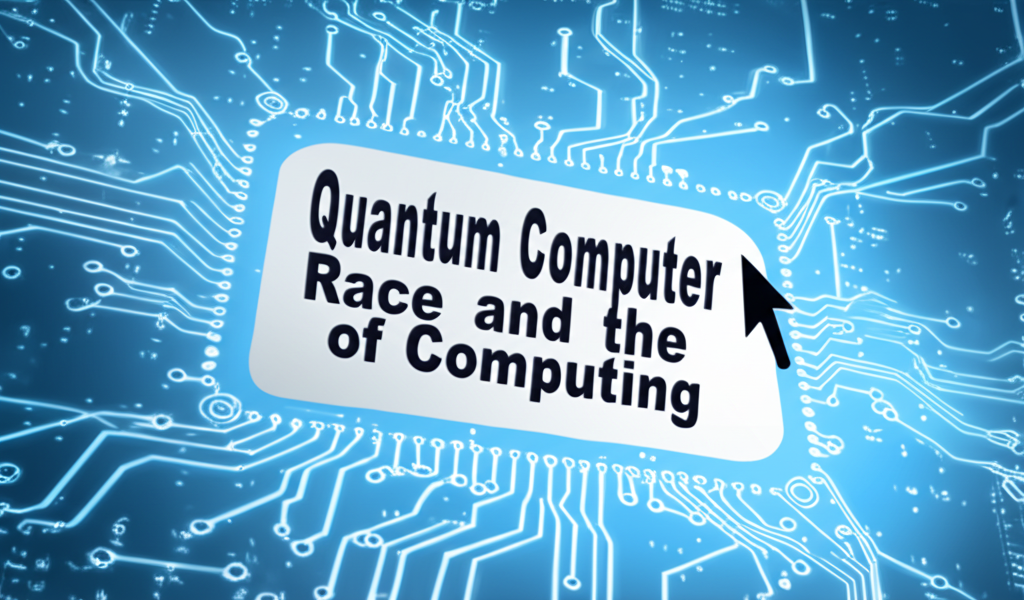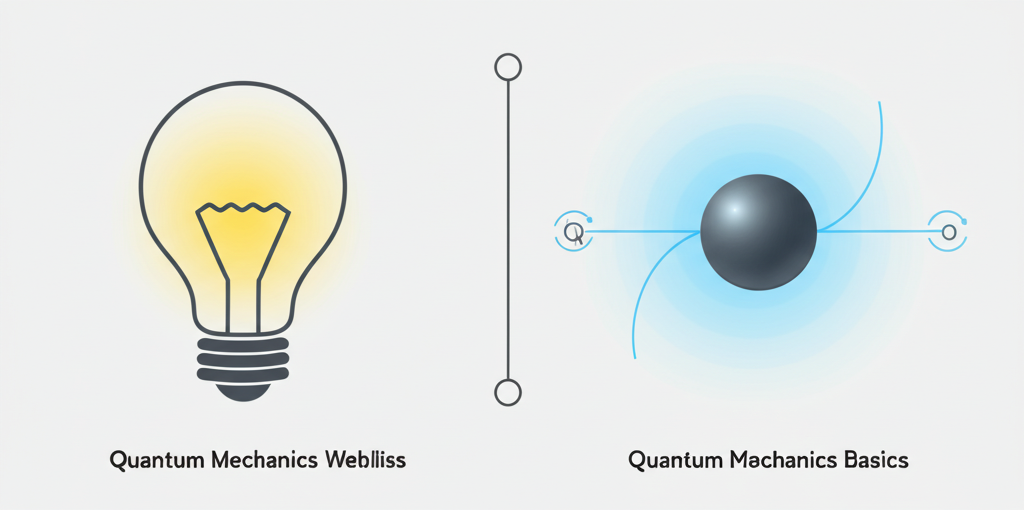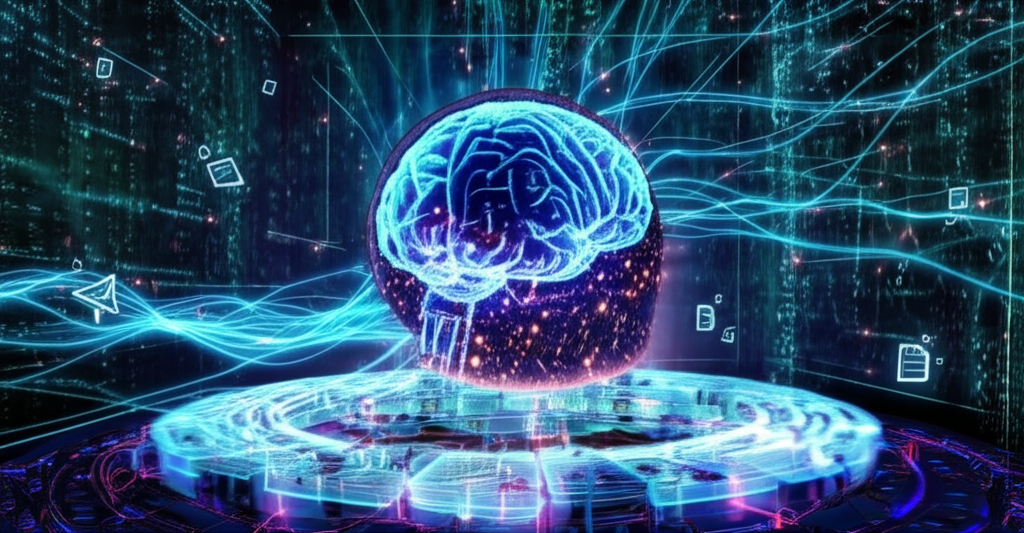Quantum Computer Race and the Future of Computing
The next great leap in computational power is here, redefining what’s possible

Introduction
Imagine a world where drug discovery takes days instead of years, where financial models predict market crashes with uncanny accuracy, and where unbreakable codes safeguard our most sensitive data. This isn’t science fiction; it’s the potential future unlocked by quantum computing. But what exactly is quantum computing, and why is there a global race to build these enigmatic machines?
Classical computers, the workhorses of today’s digital world, store information as bits, representing either 0 or 1. Quantum computers, on the other hand, leverage the mind-bending principles of quantum mechanics to use qubits. These qubits can exist in a superposition of both 0 and 1 simultaneously, vastly expanding computational possibilities. Think of it like flipping a coin: a classical bit is either heads or tails, while a qubit is spinning in the air, existing in both states at once. This allows quantum computers to tackle incredibly complex problems that are beyond the reach of even the most powerful supercomputers.
As classical computing approaches its theoretical limits, quantum computing emerges as a revolutionary paradigm that harnesses quantum mechanics to perform calculations in ways previously unimaginable. Quantum computers promise to solve complex problems that are intractable for even the most powerful supercomputers today. This article aims to provide a comprehensive overview of the quantum computer race and its potential impact on the future of computing.
Background and Context
The Genesis of Quantum Theory
Quantum computing, while rapidly advancing today, isn’t a completely new field. The underlying principles stem from quantum mechanics, a branch of physics exploring the behavior of the universe’s smallest particles. This field began its evolution in the late 19th century, marked by groundbreaking, yet controversial, discoveries. Even Albert Einstein himself struggled with the concept of entanglement! However, experiments have repeatedly validated these principles, forming the bedrock of modern technologies, including quantum computing.
Early quantum theory was shaped by brilliant minds like Max Planck, Albert Einstein, Niels Bohr, Werner Heisenberg, and Erwin Schrödinger. Their work laid the foundation for understanding the quantum realm:
- Max Planck: Introduced the concept of quantized energy, explaining the emission spectrum of black bodies and marking the birth of quantum physics.
- Albert Einstein: Proposed the photon theory of light, suggesting light behaves as both a wave and a particle.
- Niels Bohr: Introduced the Bohr model of the atom, where electrons orbit the nucleus in discrete energy levels.
- Werner Heisenberg: Developed matrix mechanics, describing quantum systems using matrices and operators.
- Erwin Schrödinger: Developed wave mechanics, describing quantum systems using wave functions and introducing Schrödinger’s equation.
Heisenberg’s uncertainty principle further revolutionized the field, stating that the position and momentum of a quantum particle cannot be simultaneously measured with arbitrary precision. Even Einstein, Podolsky, and Rosen challenged quantum entanglement with the EPR paradox, a thought experiment highlighting its seemingly paradoxical nature.
Early Visions of Quantum Computing
The concept of quantum computing emerged in the early 1980s, driven by two key proposals. Paul Benioff, a physicist at Argonne National Laboratory, proposed a quantum mechanical model of a Turing machine, laying the theoretical groundwork for quantum computation. Independently, Richard Feynman suggested a quantum computer could efficiently simulate quantum systems, a task exponentially difficult for classical computers.
Key Milestones in Quantum Computing
- 1982: Paul Benioff further developed his original model of a quantum mechanical Turing machine.
- 1984: Charles H. Bennett and Gilles Brassard employ Wiesner’s conjugate coding for distribution of cryptographic keys.
- 1985: David Deutsch, at the University of Oxford, England, describes the first universal quantum computer.
- 1994: Peter Shor’s algorithm emerges, capable of factoring large numbers efficiently, posing a threat to modern encryption.
- 1996: Lov Grover introduces an algorithm designed to significantly improve the efficiency of searching through unsorted or unstructured databases.
- 2007: Researchers demonstrate a quantum state exchange between light and matter.
- 2011: D-Wave Systems announces the release of D-Wave One, the first commercial quantum annealer.
- 2016: IBM makes quantum computing accessible on the IBM Cloud, opening up new possibilities for research and development.
- 2019: Google claims to have achieved quantum supremacy, performing a task faster than the most powerful classical computers, though this claim was debated.
- 2024: Atom Computing announces that it has “created a 1,225-site atomic array, currently populated with 1,180 qubits”.
These milestones showcase the evolution of quantum computing from theoretical concepts to tangible hardware and algorithms, setting the stage for future advancements.

Quantum Computer Benchmarking
Benchmarking plays a vital role in assessing the performance of quantum computing systems. It provides a standardized way to measure the capabilities of different quantum computers and track their progress over time. However, designing effective benchmarks for quantum computers is a complex task, as it requires considering various factors such as qubit quality, gate fidelity, connectivity, and error rates.
A good benchmark should have an unambiguous procedure that is robust against exploitation and corruption by unknown errors. It should also use a reasonable amount of resources and be applicable across different technologies and architectures. Widely adopted benchmarks and metrics, such as quantum volume, can be particularly influential, but they also have limitations and should be used with caution.
Key Performance Metrics
Several key performance metrics are used to evaluate quantum computers. These include:
- Qubit Count: While not the sole determinant of performance, a higher qubit count enables more complex computations. However, the quality of qubits is equally important.
- Coherence Time: This refers to the duration for which a qubit can maintain its quantum state. Longer coherence times allow for more complex quantum operations.
- Gate Fidelity: This metric measures the accuracy of quantum gates, which are the building blocks of quantum algorithms. Higher gate fidelity leads to lower error rates.
- Connectivity: This refers to how well the qubits are connected to each other. Higher connectivity allows for more efficient execution of quantum algorithms.
- Quantum Volume (QV): This metric combines several factors, including qubit count, connectivity, and gate fidelity, to provide a single value that represents the overall performance of a quantum computer.
- Circuit Layer Operations Per Second (CLOPS): This metric measures the number of quantum volume circuits a quantum computer can execute per unit of time, reflecting the speed of information processing.
Recent Achievements
Recent advancements in quantum computing have led to significant improvements in these key performance metrics. For example, Quantinuum’s H2-1 quantum computer has achieved a new quantum volume record of 65,536, showcasing the potential of trapped-ion architecture. IBM has also made strides in increasing qubit counts and improving gate fidelities with its superconducting qubit-based quantum computers.
These achievements demonstrate the rapid progress in quantum computing hardware and software. However, it is important to note that quantum computers are still in their early stages of development, and significant challenges remain in achieving practical quantum utility.
Quantum Supremacy vs. Quantum Economic Advantage
For years, the focus has been on achieving “quantum supremacy,” the point where a quantum computer can solve a problem that no classical computer can solve in a reasonable amount of time. While this is a significant milestone, some researchers argue that it overshadows the more practical aspect of “quantum economic advantage.” What’s the difference?
Quantum economic advantage occurs when a quantum computer can solve a problem faster and more cost-effectively than a classical computer. This is the benchmark businesses should be aiming for, as it translates directly to real-world value. As Dr. Thompson from MIT puts it, “Quantum computing is not going to be better for everything, just for some things.”
The Tortoise and the Hare: A Quantum Analogy
The MIT researchers use the analogy of the tortoise and the hare to illustrate the difference between quantum and classical computing. Classical computers (the hare) are generally faster at processing information, but they may require more steps to solve a problem. Quantum computers (the tortoise) have slower processing speeds but can potentially use more efficient algorithms to take a more direct path to the solution.
The key takeaway? Businesses need to carefully analyze the problems they’re trying to solve to determine whether a quantum approach will truly provide an advantage. For small to moderate-sized problems, classical computers will likely remain the better option. However, for large, complex problems with exponential algorithmic gains, quantum computing could be a game-changer.

Real-World Impact and Future Applications
So, what kinds of problems are we talking about? Quantum computing holds immense potential in various fields, including:
- Drug discovery: Simulating molecular behavior to accelerate the development of new drugs and therapies.
- Materials science: Designing new materials with specific properties for various applications.
- Optimization: Solving complex optimization problems in logistics, finance, and manufacturing.
- Cryptography: Developing new encryption methods to protect against quantum attacks.
As quantum technology matures, we can expect to see even more innovative applications emerge. The key is to start thinking now about how quantum computing can be leveraged to solve real-world business problems.
The quantum computing race is not just about technological advancement; it’s about unlocking a new era of problem-solving and innovation. As we move closer to the quantum future, understanding the nuances of this technology and its potential impact will be crucial for businesses and researchers alike.
Recommendations for Stakeholders
For Governments
- Increase Funding for Quantum Research: Governments should significantly increase funding for basic and applied research in quantum computing. Focus should be on supporting diverse approaches to hardware development, algorithm design, and error correction.
- Develop National Quantum Strategies: Develop and implement comprehensive national quantum strategies that outline clear goals, priorities, and investment plans. These strategies should foster collaboration between academia, industry, and government agencies.
- Invest in Quantum Education and Workforce Development: Establish educational programs and training initiatives to develop a skilled quantum workforce. This includes supporting undergraduate and graduate programs in quantum science and engineering, as well as providing opportunities for professionals to upskill.
- Establish Standards and Regulations: Proactively develop standards and regulations for quantum technologies to ensure responsible development and deployment. This includes addressing ethical considerations, security risks, and potential societal impacts.
For Businesses
- Explore Quantum Use Cases: Businesses should actively explore potential use cases for quantum computing within their respective industries. This includes identifying problems that are intractable for classical computers and evaluating the potential benefits of quantum solutions.
- Invest in Quantum Talent: Recruit and train employees with expertise in quantum computing. This includes hiring quantum scientists and engineers, as well as providing training opportunities for existing employees to learn about quantum technologies.
- Partner with Quantum Computing Companies and Research Institutions: Collaborate with quantum computing companies and research institutions to gain access to quantum hardware and expertise. This can help businesses accelerate their quantum computing initiatives and stay ahead of the curve.
- Prepare for Quantum-Resistant Cryptography: Businesses should begin preparing for the transition to quantum-resistant cryptography. This includes evaluating their current cryptographic systems and developing plans to migrate to more secure algorithms.
For Research Institutions
- Focus on Fundamental Research: Continue to push the boundaries of quantum science and technology through fundamental research. This includes exploring new qubit modalities, developing more efficient quantum algorithms, and improving error correction techniques.
- Foster Collaboration and Knowledge Sharing: Promote collaboration and knowledge sharing between researchers from different disciplines and institutions. This can accelerate the pace of innovation and lead to new breakthroughs in quantum computing.
- Develop Open-Source Quantum Software and Tools: Develop and release open-source quantum software and tools to facilitate the development of quantum applications. This can lower the barrier to entry for researchers and developers and accelerate the adoption of quantum computing.
- Engage with Industry and Government: Actively engage with industry and government stakeholders to ensure that research efforts are aligned with real-world needs and priorities. This can help translate research findings into practical applications and drive economic growth.
Conclusion
The quantum computer race is a marathon, not a sprint, and as we’ve seen, the finish line is still some distance away. We’ve explored the fundamental principles driving this revolution, examined the key milestones achieved, and discussed the potential applications poised to reshape industries. From grappling with superposition and entanglement to understanding the nuances of quantum volume and CLOPS, we’ve journeyed through the complex landscape of quantum computing.
The key takeaway? Quantum computing is not a replacement for classical computing, but a powerful tool for tackling specific, complex problems. The real value lies not just in achieving quantum supremacy, but in unlocking quantum economic advantage – solving problems faster and more cost-effectively than ever before. As businesses and researchers continue to invest in quantum hardware and algorithm development, we can expect to see even more groundbreaking applications emerge in the coming years.
The quantum computing revolution is no longer a distant dream; it’s rapidly approaching reality. While the pursuit of “quantum supremacy” grabs headlines, the real focus is shifting towards “quantum economic advantage” – the point where quantum computers offer tangible benefits over classical systems. The quantum computer race is not just about technological advancement; it’s about unlocking a new era of problem-solving and innovation. As quantum technology matures, understanding its nuances and potential impact will be crucial for businesses and researchers alike.
So, what’s next? The quantum realm is still largely uncharted territory, filled with both immense potential and significant challenges. It’s up to us – researchers, businesses, and policymakers – to navigate this landscape responsibly and collaboratively. Are you ready to embrace the quantum future and explore the possibilities it holds? The race is on, and the future of computing is being written, one qubit at a time.
